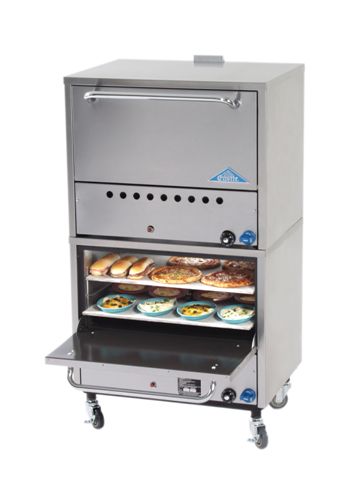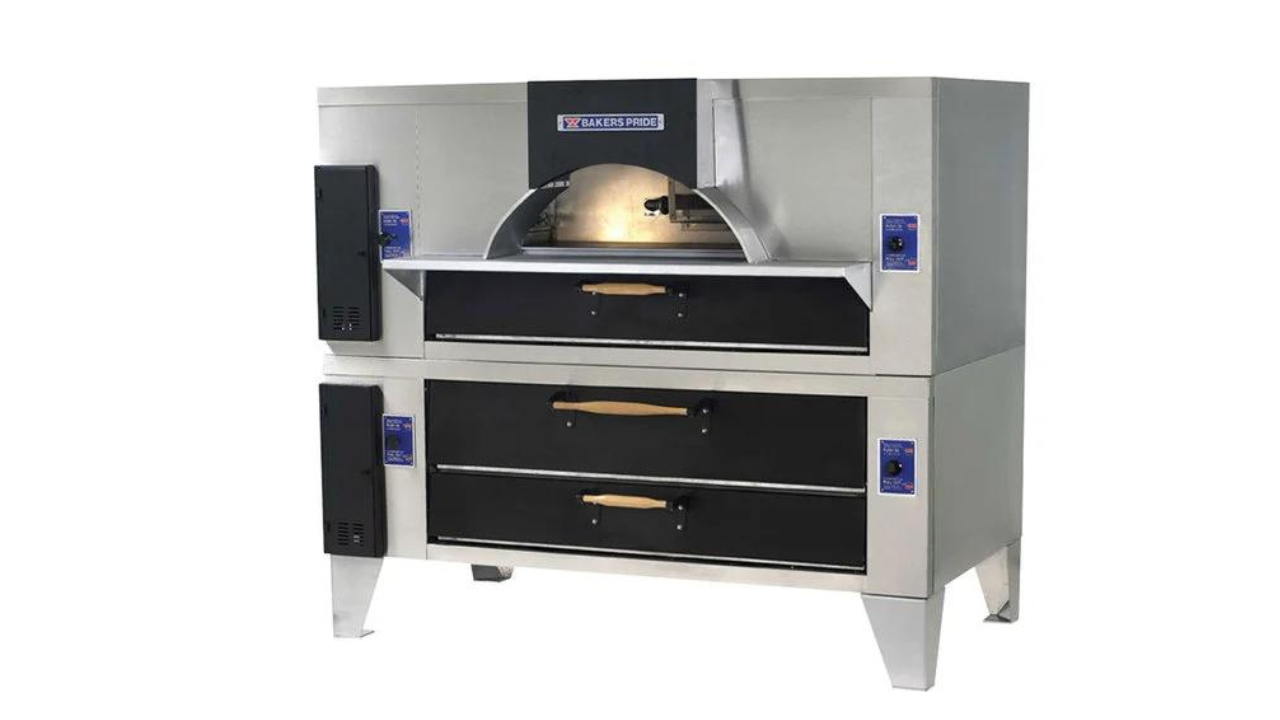Jan 25th 2024 - Team Member
Ultimate Buyer's Guide to Bakery Deck Ovens
In commercial kitchens, bakery deck ovens are crucial for their reliable performance and even baking capabilities. Proper maintenance is key to their longevity and efficiency. This comprehensive guide covers essential practices for maintaining deck ovens, ensuring they remain a dependable asset in any kitchen.
How to Select the Right Bakery Oven: a Quick Overview
| Consideration | Description |
|---|---|
| Types of Food | Match the oven type to the specific food items you plan to bake. |
| Power Sources & Heating Methods | Ensure the oven's power source and heating method align with your bakery's requirements. |
| Budget & Efficiency | Find a balance between the oven's cost and its efficiency and quality to ensure value for money. |
Understanding Deck Oven Maintenance
The Critical Role of Maintenance

- Preventive Care: Regular maintenance is essential for preventing breakdowns and ensuring continuous operation.
- Operational Efficiency: A well-maintained oven operates more efficiently, which can lead to significant energy and cost savings.
Comstock-Castle 2PO31-NG
Daily Maintenance Procedures
Cleaning and Inspection
- Interior Cleaning: Daily removal of crumbs and baking residues prevents buildup and potential fire hazards.
- Exterior Maintenance: Regular wiping of the exterior with a non-abrasive cleaner maintains appearance and functionality.
Essential Daily Checks

- Door Seal Inspection: Regularly inspect seals for wear and tear to prevent heat escape.
- Temperature Accuracy: Use an oven thermometer to verify that the oven reaches the desired temperatures accurately.
Bakers Pride FC-616/Y-600-NG
Periodic Professional Maintenance
The Need for Expert Servicing
- In-Depth Cleaning: Professional services provide thorough cleaning, including hard-to-reach areas.
- Technical Oversight: A qualified technician can identify and rectify potential issues before they escalate.
Enhancing Oven Longevity
Usage Best Practices
- Avoid Overloading: Overloading the oven can result in uneven baking and strain on heating elements.
- Appropriate Temperatures: Using recommended temperatures helps prevent excessive stress on oven components.
Prompt Repairs and Replacements
- Immediate Attention to Repairs: Addressing small issues promptly can prevent them from turning into more significant problems.
Establishing a Maintenance Schedule
Regular Maintenance Planning
- Maintenance Log: Documenting regular checks and maintenance activities helps in tracking the oven’s condition.
- Scheduled Reminders: Set periodic reminders for comprehensive inspections and professional maintenance.
Training and Education
- Staff Training: Ensure kitchen staff is trained in the correct use and daily maintenance of the oven.
- Awareness and Recognition: Educate staff to recognize signs that indicate the need for maintenance or repair.
Tackling Common Challenges
Managing Wear and Tear
- Component Replacement: Regularly inspect and replace parts like door hinges and seals as needed.
- Safe Cleaning Practices: Use recommended cleaning products to avoid damaging surfaces and components.
Technical Troubleshooting
- Basic Oven Mechanics: Basic knowledge of oven functions can help in troubleshooting common issues.
- Expert Intervention: Seek professional help for complex technical problems.
Advanced Maintenance Techniques
Deep Cleaning Procedures
- Quarterly Cleaning: Perform a deep clean every few months to remove stubborn residues and check hidden components.
- Specialized Cleaning Tools: Use tools and solutions designed specifically for deck oven cleaning.
Preventive Replacements
- Proactive Part Replacement: Replace parts that are known to wear out over time, even before they show signs of failure.
Enhancing Performance and Reliability
Optimizing Oven Settings
- Calibration: Regularly calibrate the oven to ensure it heats correctly according to the set temperatures.
- Settings Adjustment: Adjust settings based on usage patterns to optimize performance.
Environmental Considerations
- Ambient Conditions: Ensure the oven operates in a suitable environment, considering factors like ventilation and humidity.
Record Keeping and Documentation
Importance of Records
- Service History Log: Maintain a detailed log of all maintenance and repair activities.
- Warranty Compliance: Keep records to comply with warranty requirements and facilitate any claims.
Upgrades and Updates
- Staying Updated: Keep abreast of any updates or recalls from the manufacturer.
- Considering Upgrades: Evaluate the benefits of upgrading to newer models or features.
Conclusion
Deck oven maintenance is integral to the success of any commercial kitchen. Implementing these best practices not only extends the life of the oven but also ensures it operates at peak efficiency.
For more insights and resources on maintaining commercial kitchen equipment, visit Culinary Depot.
In summary, the longevity and optimal functioning of a deck oven depend on a comprehensive maintenance routine. This involves regular cleaning, timely repairs, professional servicing, and staff training. By adhering to these guidelines, kitchens can maximize the efficiency and lifespan of their deck ovens, ensuring consistent, high-quality culinary output.

